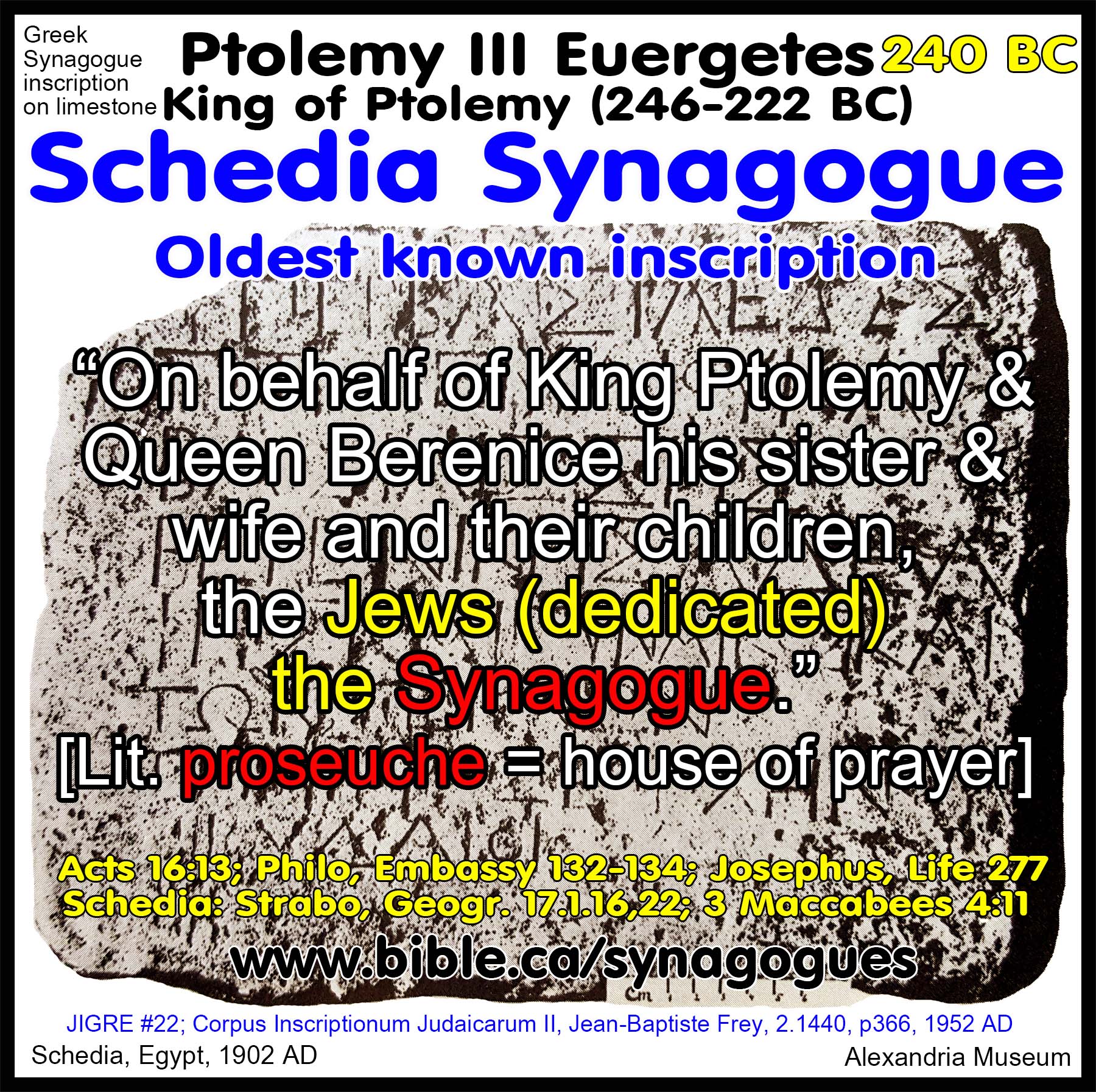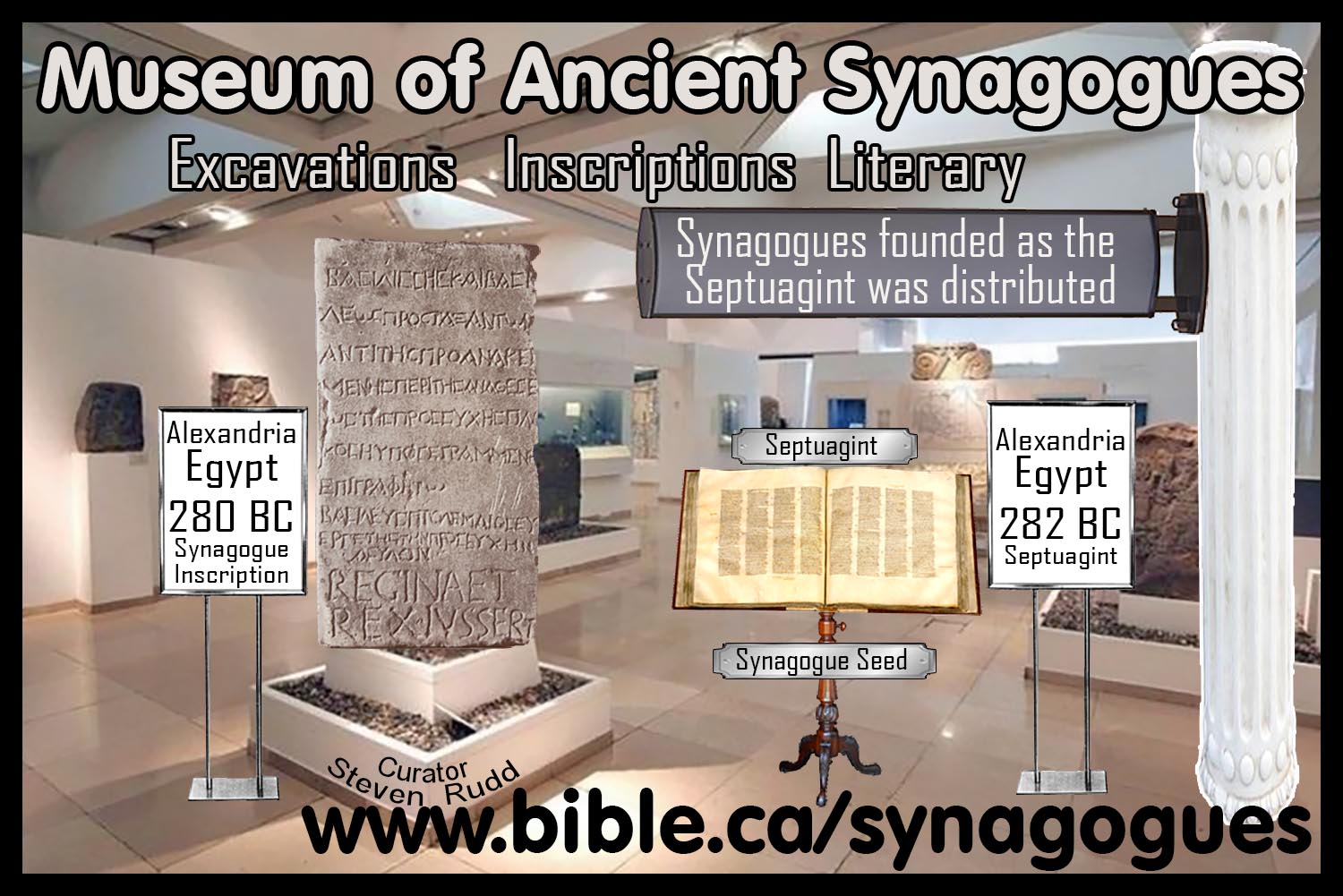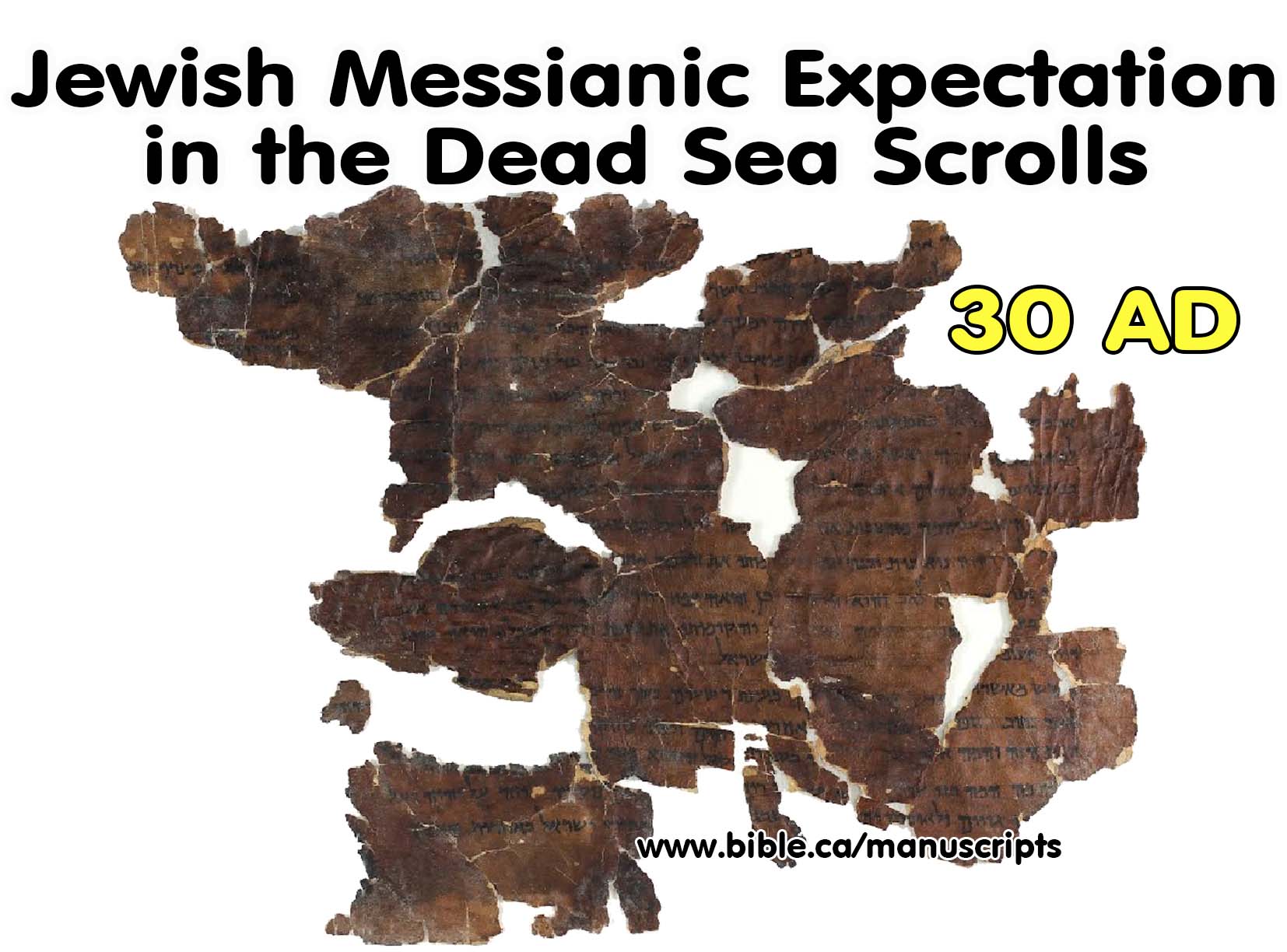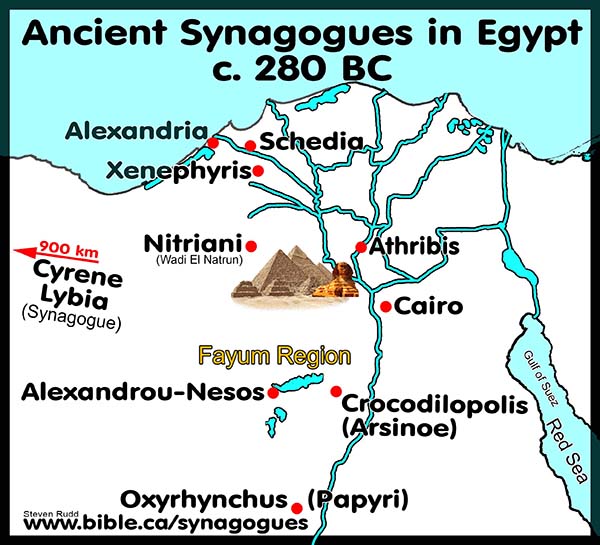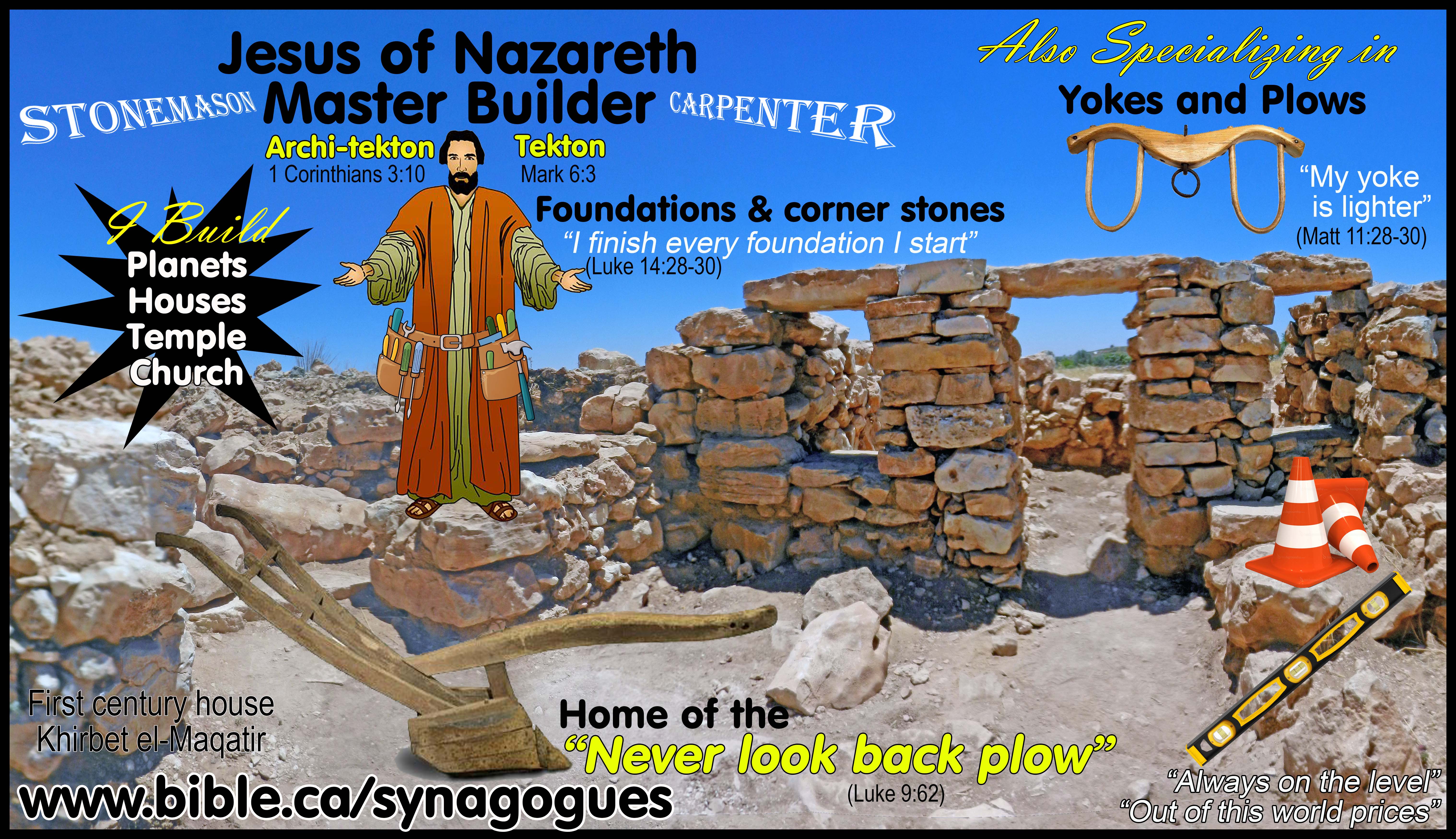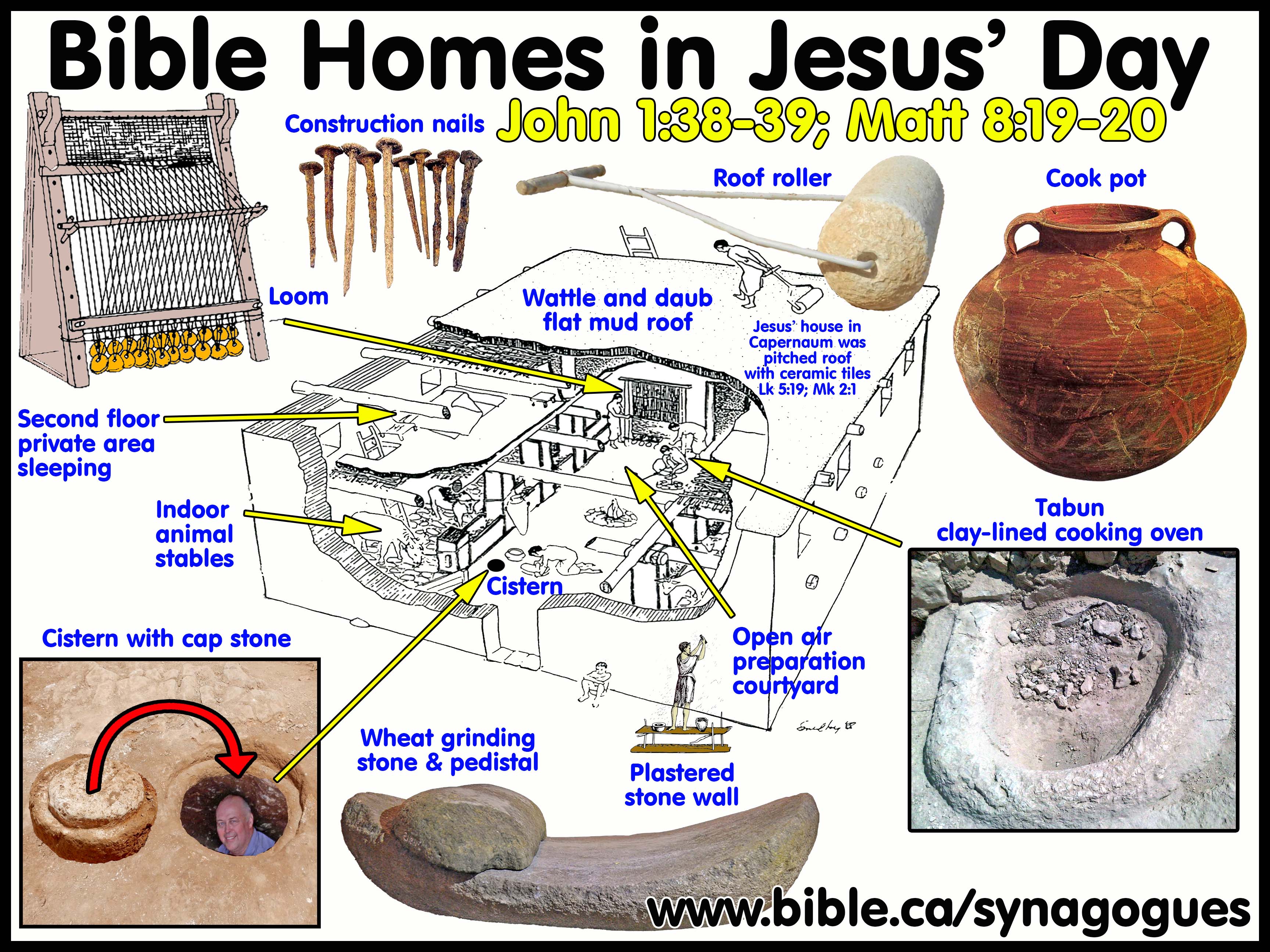Ancient Synagogue Inscription from Schedia, Egypt 240 BC
Synagogue Inscriptions from the Oldest Synagogues in the world
|
Schedia Egypt 240 BC |
A. Synagogue Inscription:
1. Inscription text: “On behalf of King Ptolemy & Queen Berenice his sister & wife and their children, the Jews (dedicated) the Synagogue.” [Lit. proseuche = house of prayer]”
2. Glyptic Artifact: Greek Synagogue inscription on limestone
3. Provenance: Schedia, Egypt, 1902 AD
4. Current location: Alexandria Museum 37 x 29 cm.
5. Synagogue Occupation Date (SOD) = Excavation date + Inscriptional date + Literary date = 240 BC
a. SOD computation system details
b. Excavation date: none
c. Inscriptional date: 240 BC
d. Literary date: none
6. Contemporary Rulers: Ptolemy III Euergetes King of Ptolemy (246-222 BC)
7. References:
a. JIGRE :Jewish Inscriptions of Graeco-Roman Egypt: JIGRE #22
b. Photo of inscription: CIJ: Corpus Inscriptionum Judaicarum II, Jean-Baptiste Frey, 2.1440, p366, 1952 AD
8. Related Literary references:
a. Acts 16:13; Philo, Embassy 132-134; Josephus Life 277
b. Schedia: Strabo, Geogr. 17.1.16,22; 3 Maccabees 4:11
9. Literary references to Schedia:
a. The Judeans Held in Schedia: "And when these people were brought to the place being called Schedia, and the aimless voyage was finished, just as had been decreed by the king, he commanded them to encamp in the hippodrome, having established it outside the city with an immense circumference, and having made it very well situated for pointing out to public shame to all those returning to the city, and to those going from the city into the countryside for a trip abroad, so that they could not communicate with his forces, nor could they claim the enclosing wall at all." (3 Maccabees 4:11)
b. “On passing through the Canobic gate of the city, on the right hand is the canal leading to Canobus, close to the lake. They sail by this canal to Schedia, to the great river, and to Canobus, but the first place at which they arrive is Eleusis. This is a settlement near Alexandreia and Nicopolis, and situated on the Canobic canal. It has houses of entertainment which command beautiful views, and hither resort men and women who are inclined to indulge in noisy revelry, a prelude to Canobic life, and the dissolute manners of the people of Canobus. At a little distance from Eleusis, on the right hand, is the canal leading towards Schedia. Schedia is distant four schoeni from Alexandreia. It is a suburb of the city, and has a station for the vessels with cabins, which convey the governors when they visit the upper parts of the country. Here is collected the duty on merchandise, as it is transported up or down the river. For this purpose a bridge of boats is laid across the river, and from this kind of bridge the place has the name of Schedia. Next after the canal leading to Schedia, the navigation thence to Canobus is parallel to the sea-coast, extending from Pharos to the Canobic mouth. For between the sea and the canal, is a narrow band of ground, on which is situated the smaller Taposeiris, which lies next after Nicopolis, and Zephyrium a promontory, on which is a small temple dedicated to Venus Arsinoë. Anciently, it is said, a city called Thonis stood there, which bears the name of the king, who entertained as his guests Menelaus and Helen. The poet thus speaks of the drugs which were given to Helen, ‘the potent drugs, which Polydamna, the wife of Thon, gave to Helen.’” (Strabo, Geogr. 17.1.16)
c. “After the Bolbitine mouth there runs out to a great distance a low and sandy promontory. It is called Agnu-ceras (or Willow Point). Then follows the watch-tower of Perseus,and the fortress of the Milesians. For in the time of Psammitichus, and when Cyaxares was king of the Medes, some Milesians with 30 vessels steered into the Bolbitine mouth, disembarked there, and built the above-mentioned fortress. Some time afterwards they sailed up to the Saitic Nome. and having conquered Inarus in an engagement at sea, founded the city Naucratis, not far above Schedia.” (Strabo, Geogr. 17.1.18)
d. “In sailing up the river from Schedia to Memphis, on the right hand, are a great many villages extending as far as the lake Mareia, among which is that called the village of Chabrias. Upon the river is Hermopolis, then Gynæcopolis, and the Gynæcopolite Nome; next Momemphis and the Momemphite Nome. Between these places are many canals, which empty themselves into the lake Mareotis. The Momemphitæ worship Venus, and a sacred cow is kept there, as Apis is maintained at Memphis, and Mneyis5140 at Heliopolis. These animals are regarded as gods, but there are other places, and these are numerous, both in the Delta and beyond it, in which a bull or a cow is maintained, which are not regarded as gods, but only as sacred.” (Strabo, Geogr. 17.1.22)
B. Discussion:
1. One of the oldest synagogue inscriptions ever discovered.
a. “The first archeological evidence for a synagogue appears in Schedia, near Alexandria in Egypt, in the third century bce. Although no synagogues are clearly attested during the period of Ezra and Nehemiah (late fifth and early fourth centuries bce), the tradition traces the practice of translating Scripture from Hebrew into Aramaic during a public reading to Ezra’s reading of the Torah to the people of Jerusalem (Nehemiah 8; b. B. Qam. 82a; Ber. 33a; Meg. 17b). According to Neh 8:7*, the Levites helped the people to understand the Torah by interpreting or giving meaning to the words.” (Zephaniah, M. A. Sweeney, p30, Targum Zephaniah 2003 AD)
2. Location of Schedia:
a. Schedia was located on a canal which is typical for ancient synagogues.
b. The Jews were deported to Schedia, indicating it was a Jewish city with a synagogue.
c. “In the 19th century it was proposed to identify Schedia in the extensive mounds of ruins between Kom el-Giza and Kom el-Nashwa, and the identification was confirmed by the discovery there of inscriptions with the name of Schedia. (Pottery from Schedia, Archer Martin, Rai Cretariae Romanae Acta, 40, 2008 AD)
d. Inscription discovered in 1902 AD, 20 kilometers from Alexandria: "A marble slab found near Alexandria bears an inscription [Greek] dedicating a synagogue to Ptolemy III (Euergetes), who ruled Egypt from 246–221 B.C., and his queen Berenice." (Nelson’s new illustrated Bible dictionary, Synagogue, origin, 1995 AD)
3. “Of the other synagogue inscriptions found in Egypt, no. 1440 from Schedia (modern Kafr el-Dawar), not far from Alexandria, records the dedication of a proseuche built by “the Jews” in honor of “King Ptolemy (III Euergetes) and Queen Berenice his sister and wife and their children.” This inscription, and one from Crocodilopolis with the same kind of dedication (1532A), are the oldest synagogue inscriptions in existence, dating from between 246–221 b.c.e.” (ABD, Vol 1, p155, Alexandria)
By Steve Rudd 2017: Contact the author for comments, input or corrections
|
Jesus your messiah is waiting for you to come home! |
|
|
Why not worship with a first century New Testament church near you, that has the same look and feel as the Jewish Synagogue in your own home town. As a Jew, you will find the transition as easy today as it was for the tens of thousands of your forefathers living in Jerusalem 2000 years ago when they believed in Jesus the Nazarene (the branch) as their messiah. It’s time to come home! |
|
By Steve Rudd: Contact the author for comments, input or corrections.
Go to: Main Ancient Synagogue Start Page
